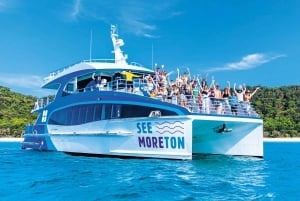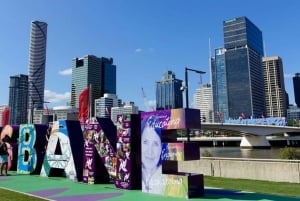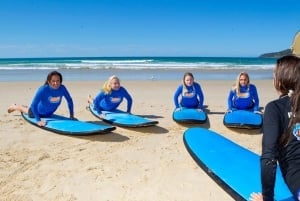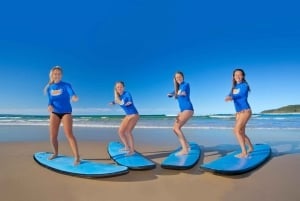Beach Safety and Surf Life Saving Flags
Important guidelines for safer beaches
Be SAFE and enjoy the Surf
No visit to the Gold Coast is complete without a swim at one of the many surf beaches. However swimming in the surf is Dangerous unless you SWIM BETWEEN THE RED and YELLOW FLAGS at a PATROLLED BEACH.
In the first 13 days of January 2010 there were 3 deaths by drowning on Gold Coast beaches.
Never, ever, ever swim at night or in darkness.
Do NOT swim after consuming any alcohol.
Children should be watched at all times and if possible always swim with someone else or tell somebody you are going into the surf.
If you get into difficulties do not panic but raise your arm for help or call to those nearby for assistance. Try to swim with others and never swim too far out or alone.
Respect the beach and the surf and you will come to love our beaches. See our F.L.A.G.S. guide at the end.
Also the Australian sun can be damaging to the health of your skin and body. It is vital that you use protective sun screens, hats, clothing and of course drink water. Many a visitor (and local) has regretted for many days the damaging sunburn to their skin due to not being sun safe which can be painful and extremely uncomfortable. Extreme cases can lead to hospitalization or other medical treatment.
Surf Life Saving Flags
What do the Beach Flags mean?
It is important to ALWAYS SWIM BETWEEN THE RED AND YELLOW FLAGS. Should you get into any problems please remain calm and put your hand up. A Surf Life Saver will see you and come to help.
Red and yellow flags - you should only surf (swim) between these flags.

Indicates the safest swimming area (the patrolled area). These are the most common flags you will see and on the popular beaches are only a few hundred metres apart, so you can always find a patrolled beach. Do not swim on an unpatrolled beach.
Yellow flag - CAUTION dangerous conditions.

Potentially dangerous conditions (Caution). This means that you should check with a beach patrol before going in. The danger could be temporary or last many hours.
Red flag - Beach CLOSED do not enter the water under any circumsrtances.

Danger – do not enter water (Stop). When the red flag is displayed, the beach is closed for swimming. Don’t risk going in. Try another beach elsewhere on the Coast or there’s plenty of other things to do on the Gold Coast if the beach is closed.
Red and white chequered flag - SHARK sighted in the water !

Shark has been sighted in the water. Surf patrols will usually chase the shark well out to sea and ensure there are no more dangers before reopening the beach. If you are asked to get out of the water by a lifeguard please do so quickly.
Blue flag - Board riding area. Do not swim in these areas.

Indicates board riding area for surfers. This is a safe area to ride your surfboard and is often nearby the swimming area. Please keep your surfboard out of the swimming area. There’s enough room for both.
F.L.A.G.S. Guide
F = Find the flags and swim between them.
The red and yellow flags represent the area patrolled by lifesavers and lifeguards. They mark the safest place to swim at the beach.
L = Look at the safety signs.
The safety signs help you identify potential dangers and daily conditions at the beach. These are located at beach access points and at the flagged areas. Please read them carefully before entering the water.
A = Ask a lifesaver for some advice.
Surf conditions can change quickly (water depth, currents, wave size and type). Talk to a lifesaver or lifeguard before entering the water.
G = Get a friend to swim with you.
Always swim with a friend so you can look out for each other's safety and get help if needed. Children should always be supervised by an adult.
S = Stick your hand up for help
If you get into trouble in the water, stay calm. Raise your arm to signal for help, float and wait for assistance. Float with the current or rip. Do not try and swim against it.











